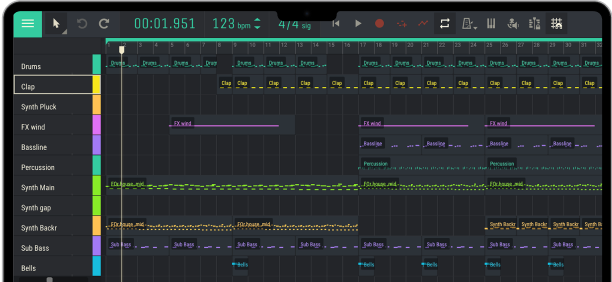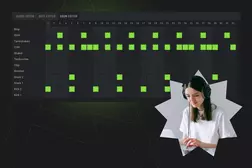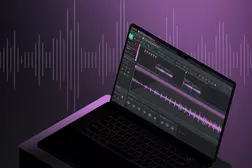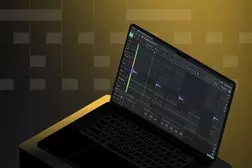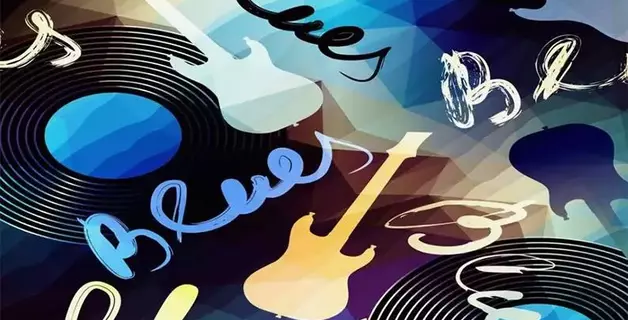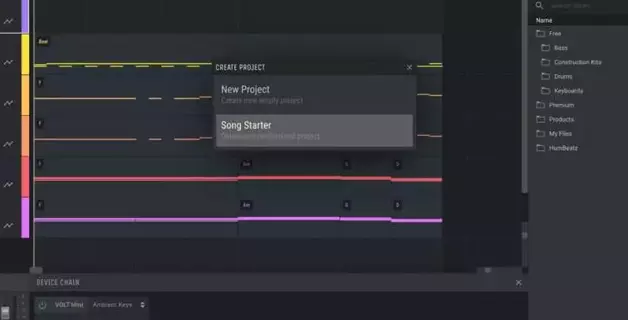How to Make Reggae Music

Reggae music originated in Jamaica in the late 1960s and has since become a global phenomenon known for its distinctive rhythm, catchy melodies, and powerful lyrical messages. With deep roots in Jamaican culture and history, reggae has evolved into a genre that celebrates social justice, equality, and love.
Writing reggae music requires a deep understanding of its unique elements, including rhythm, chord progressions, lyrics, vocal delivery, and instrumentation. In this article, we’ll delve into the art of writing reggae music, exploring various techniques and tools to help you create authentic and captivating songs.
Whether you’re an experienced musician or just starting out, this guide will provide you with valuable information and tips on how to write reggae music that will resonate with your audience.
Before we dive into the details, it’s important to note that reggae is a genre rooted in cultural and political expression. It originated as a form of protest against social injustice and oppression, giving a voice to the marginalized and disenfranchised. When writing reggae music, it is important to honor and uphold these values and use lyrics to address important issues in a thoughtful and meaningful way. Now that we have laid the foundation, let’s take a closer look at the key elements of writing reggae music, starting with understanding its roots.
Understanding the Roots of Reggae Music
In order to write authentic and compelling reggae music, it is essential to have a deep appreciation for its historical and cultural roots. Reggae music emerged in Jamaica in the late 1960s, evolving from earlier genres such as ska and rocksteady. It was heavily influenced by African rhythms, American R&B, and Jamaican folk music.
The birth of reggae can be traced back to the socio-political climate of Jamaica. The lyrics of early reggae songs often addressed social issues such as poverty, inequality, and corruption. Artists such as Bob Marley, Peter Tosh, and Jimmy Cliff used their music as a platform to shed light on the hardships faced by the Jamaican people.
The rhythm in reggae music is characterized by syncopated bass lines and off-beat guitar and keyboard accents. This distinctive rhythm, known as the “one drop” pattern, creates a laid-back groove that is instantly recognizable. The use of percussion instruments such as bongo drums and tambourines further contribute to the genre’s rhythmic richness.
Another defining element of reggae is the emphasis on the bass line. The bass guitar plays an important role in providing the melodic foundation and driving the music forward. To capture the essence of reggae in your songs, pay close attention to the interplay between the bass line and the other instruments.
Additionally, reggae is renowned for its strong vocal melodies and harmonies. The soulful and sincere delivery of the artists enhances the emotional impact of the lyrics. It is important to explore different vocal techniques such as melisma and vocal improvisation to infuse your reggae songs with depth and emotion.
When it comes to lyrical content, reggae music often delves into themes of social justice, spirituality, love, and unity. Engage your audience by creating meaningful and relatable lyrics that resonate with their experiences. Use storytelling techniques and vivid imagery to paint a picture that will captivate the listener. In the next section, we will look at the importance of rhythm and timing in reggae music, as well as methods for creating exciting chord progressions. Understanding these fundamental aspects will help you create the rhythmic foundation of your reggae compositions.
Introduction to Reggae Rhythm and Beat
One of the key elements that distinguishes reggae music is its distinctive rhythm and timing. Understanding and mastering these rhythmic elements is essential to writing authentic and engaging reggae songs.
Reggae music is known for its relaxed groove and syncopated rhythm. The most common rhythmic pattern in reggae is known as the “one drop” rhythm, characterized by an emphasis on the 2nd and 4th bars, with the kick drum playing on the 3rd bar. This creates a unique feel that is instantly recognizable and sets the foundation for the rest of the instruments to groove.
To become familiar with the reggae rhythm, it is necessary to listen to a wide range of reggae music and study the drum patterns. Pay attention to the relationship between the kick drum, snare drum, and hi-hat, and how they interact to create the characteristic reggae rhythm. Practice by jamming along to reggae tracks or playing with other musicians to internalize the rhythm and develop a clear sense of timing.
In addition to the drum patterns, the bassline plays an important role in setting the rhythm of a reggae song. The bass guitar is usually played in a syncopated manner, emphasizing the off-beats and adding depth to the overall groove. Study the basslines of iconic reggae tracks and experiment with creating your own basslines that complement the rhythmic foundation of your song.
Additionally, reggae music often includes skanks, which are rhythmic chords played on the guitar or keyboard. Skanks usually occur on beats 2 and 4, enhancing the syncopation and adding another layer of rhythm to the music. Experiment with different chord voicings and rhythmic patterns to find the skank that best suits the mood and energy of your song.
When writing reggae music, it is important to pay attention to the rhythm and feel of the instruments. Reggae is known for its relaxed and laid-back feel, so aim for a loose and groove-filled performance. Avoid rushing the rhythm or playing too tightly. Allow the instruments to breathe and give the music a natural flow.
Finally, don’t be afraid to experiment with polyrhythms and syncopations in your reggae compositions. These techniques can add complexity and texture to your music, creating a multi-layered rhythmic experience for the listener.
By becoming familiar with reggae rhythm and timing, you can create a foundation for your reggae compositions. In the next section, we’ll look at the importance of chord progressions and how to create exciting harmonies for your reggae songs.
Reggae rhythm structure
- The Beat: A key characteristic of reggae is its rhythmic pattern known as the “One Drop.” This beat places emphasis on the third bar of a four-beat measure, leaving the first bar open. The bass and drum play key roles in creating this signature bounce. The kick drum hits hard on the third bar, while the rimshot or side stick adds subtle accents on the second and fourth bars;
- Basslines: The foundation of any great reggae tune is the bassline. The bass guitar takes center stage with a melodic, syncopated groove that drives the song forward. Keep the basslines simple but catchy, making sure they match the drum beat and leave room for other instruments;
- Listen and learn: To better understand the reggae rhythm, listen to classic reggae tunes by artists like Bob Marley, Peter Tosh, and Gregory Isaacs. Analyze their grooves and beats and try to reproduce them on your chosen instruments.
Reggae Lyrics and Song Structure
- Theme: Reggae lyrics often touch on social, political, and spiritual themes, reflecting the thoughts and experiences of the people who created them. However, there are no strict rules regarding the theme. Your song can tell a story, convey a message, or simply celebrate love and life;
- Structure: The standard reggae song structure usually follows a verse-chorus-verse pattern, with occasional variations such as pre-choruses and instrumental breaks. Keep the structure simple and easy to follow so listeners can focus on your engaging message and groove;
- Chorus: A memorable chorus is essential to any great song. Make sure your chorus has a strong, catchy melody that is easy to remember and sing along to;
- Lyric Assistant: If you are having trouble finding the perfect lyrics or structure for your reggae song, Lyric Assistant can help you. With our unique system, you can choose the genre, theme and structure, as well as the artists you want your song to feature, and Lyric Assistant will generate a personalized song for you.
Arrangement and instruments
- Guitars: A reggae song typically features a rhythm guitar playing short, syncopated staccato chords known as “skanking.” The chords are usually played on the off-beat, creating a light and bouncy feel;
- Keyboards: The keyboard or organ provides additional layers of melody, often doubling the guitar or bassline. The iconic sound of the “bubble” organ can be heard in many reggae songs, adding a sense of depth and warmth;
- Brass: Brass sections are common in reggae music, featuring trumpets, trombones, and saxophones. These instruments can be used for melody lines, drum parts, or countermelodies, giving your song a full, vibrant sound;
- Production: When recording and mixing your reggae song, aim for a warm, vintage sound. Experiment with effects like reverb, delay, and tape saturation to achieve this mood. Keep the drums and bass front and center in your mix, as they are the driving force behind the genre.
By understanding the basics of reggae music, from its rhythm and song structure to lyrics and arrangement, you’ll be well on your way to creating an authentic, addictive reggae song. And when you need help, don’t forget to turn to Lyric Assistant for a seamless songwriting experience.
Now, grab your instruments, find inspiration, and let the groove guide you as you develop your reggae track.
Learning Reggae Chord Progressions
Chord progressions are an integral part of any song, and reggae music is no exception. Understanding and using the right chord progressions can help create the signature sound and feel of reggae music.
One of the common chord progressions is the I–IV–V progression, often heard in major-key reggae. For example, in the key of C major, the chord progression would be C-F-G. This progression provides a solid foundation for the song and allows for variations and embellishments.
While the one-drop progression is a reggae staple, it is important to experiment with different chord voicings and inversions to add variety and interest to your music. Try using different rhythm guitar techniques, such as skank or staccato strumming, to create a rhythmic and percussive element that complements the overall groove.
Additionally, you can incorporate secondary dominant chords to add tension and movement to your chord progressions. This involves using chords that are outside the key but lead into the next chord in the progression. For example, in the key of C major, you might use an E7 chord before resolving to an A minor chord (the IV chord), creating a sense of anticipation and resolution.
Another technique often used in reggae is chord substitution. This involves replacing one chord with another that has a similar function or sound. This can add color and unique harmonies to your music. Experiment with chord substitutions in a one-drop progression and see how it changes the overall mood and feel of your song.
It’s worth noting that while reggae is typically associated with major keys, minor keys are also common and can add a different flavor to your compositions. Experiment with minor chord progressions and explore the emotional depth they bring to your reggae songs.
As with any songwriting, the key is to trust your ear and let your creativity guide you. Don’t be afraid to break the rules and experiment with different chord progressions to create your own unique reggae sound.
In the next section, we’ll look at the art of writing compelling reggae lyrics, which is an integral part of conveying the powerful messages and emotions that reggae is known for.
Mastering the Art of Writing Reggae Lyrics
Reggae music is renowned for its powerful and thought-provoking lyrics that touch on social issues, love, spirituality, and personal experiences. Mastering the art of writing lyrical content is key to creating impactful and authentic reggae songs.
When writing reggae song lyrics, it is important to have a clear message or intention. Identify the topic or theme you want to address and determine what emotions or thoughts you want to evoke in your audience. Whether it is to shed light on social injustice, spread love and unity, or share personal experiences, clarity of purpose will guide your lyrical journey.
Reggae song lyrics often incorporate storytelling techniques, vivid imagery, and symbolism to captivate the listener. Paint a picture with your words and draw them into the narrative. Use descriptive language to create an emotional connection and allow listeners to relate to the message you are conveying.
In addition to storytelling, repetition plays an important role in reggae lyrics. Phrases and refrains are often repeated throughout the song, creating a hypnotic and memorable effect. This repetition allows the listener to grasp the message and become part of the experience. Create catchy, concise phrases that are easy to sing along to and that will resonate with the audience.
An important aspect of writing reggae lyrics is maintaining authenticity. Reggae music originated in Jamaica and carries a distinct cultural and linguistic identity. Incorporating Jamaican patois, slang, and cultural references can add an extra layer of authenticity to your songs. However, it is important to do so in a respectful and accurate manner, ensuring that the message can still be accessible to a wider audience.
Reggae lyrics often touch on serious and profound themes, but it is important to balance the weight with moments of hope, love, and positivity. Fill your lyrics with uplifting and inspiring messages, reminding listeners that change is possible and that unity and love can overcome adversity. Collaboration can play a major role in improving the lyrical content of your reggae songs. Work with other songwriters, poets, or artists to bring different perspectives and ideas. Embrace different points of view and refine your lyrics together to create something truly powerful.
Finally, listen to a wide range of reggae music from different eras and artists to gain inspiration and insight into the lyrical traditions of the genre. Study the lyrics of legendary artists like Bob Marley, Peter Tosh, and Burning Spear to see how they effectively convey their messages through words.
By mastering the art of writing reggae lyrics, you will be able to convey powerful messages and capture the essence of the reggae genre. In the next section, we will look at incorporating Jamaican patois and slang into your reggae lyrics, which will add authenticity to your songs.
Incorporating Jamaican Patois and Slang into Reggae Lyrics
Jamaican Patois, also known as Jamaican Creole, is an integral part of the cultural identity of reggae music. Incorporating Jamaican Patois and slang into your reggae lyrics can give your songs an authentic and unique flavor.
Jamaican Patois is a vibrant and expressive language that is the result of mixing various African and European languages. It is characterized by its own distinct pronunciation, vocabulary, and grammar. By incorporating Jamaican Patois into your lyrics, you are paying homage to the roots of reggae music while adding an element of cultural authenticity.
When using Jamaican Patois in your lyrics, it is important to find a balance between maintaining authenticity and making the message accessible to a wider audience. Consider using a mixture of Jamaican Patois and standard English to create a lyrical blend that captures the spirit of reggae while still conveying meaning to listeners who may not be familiar with the language. In addition to Jamaican Patois, incorporating Jamaican slang can further enhance the authenticity of your reggae lyrics. Jamaican slang is dynamic and constantly evolving, and it brings a sense of local flavor and personality to the music. Familiarize yourself with popular Jamaican slang terms such as “irie” (meaning feeling good), “irie vibes” (refers to a positive and peaceful atmosphere), or “one love” (symbolizes unity and harmony). Using Jamaican Patois and slang can add depth to your lyrics. It can help convey emotion, create vivid imagery, and establish an immediate connection with the listener. However, it is important to use these linguistic elements respectfully and accurately. Incorrect or excessive use of Jamaican Patois and slang can come across as inauthentic or disrespectful to the culture. Learn proper usage through research and study, and consult with native Jamaican speakers or experts if necessary.
Remember, the goal is to authentically convey the spirit of reggae music. Incorporating Jamaican patois and slang should enhance the overall message and feel of your song and make it resonate more deeply with your audience.
In the next section, we will look at how instrumentation and arrangement contribute to the unique sound of reggae music and how they can be used to create compelling compositions.
The Use of Instrumentation and Arrangement in Reggae Music
Instrumentation and arrangement play a key role in creating the distinctive sound and atmosphere of reggae music. Understanding how to use these elements effectively will help you create exciting and authentic reggae songs.
Reggae instruments typically consist of drums, bass, guitar, keyboards, and various percussion instruments. Each instrument plays a specific role in creating the rhythmic and melodic foundation of the music.
Reggae drums are characterized by a relaxed feel, with the snare or rimshot emphasizing beat 3 — the hallmark of the one-drop rhythm. The snare drum and hi-hat work together to create a relaxed groove. Experiment with different drum patterns to find the right balance between simplicity and complexity, allowing the drums to complement the other instruments perfectly.
The bass guitar plays a crucial role in driving the rhythm of a reggae song. It usually follows a one-drop rhythm and provides the melodic foundation. Pay special attention to the technique and tone of the bass, as this can greatly affect the overall mood of the music. The guitar in reggae can be divided into rhythm guitar and lead guitar. The rhythm guitar often plays an important role with its skanking patterns, providing the distinctive off-beat accents central to reggae. The lead guitar adds melodic elements, fills, and solos to enhance the musicality.
Keyboards add depth and texture to a reggae song arrangement. They can provide lush chords, melodic hooks, or rhythmic patterns, contributing to the overall groove and atmosphere. Experiment with different keyboard sounds and textures to find the perfect combination for your song.
Percussion instruments such as bongos, congas, and tambourines are commonly used in reggae to add extra layers of rhythm and texture. Incorporating different percussion elements can enhance the overall groove and bring a dynamic element to the music.
When it comes to arrangement, simplicity and space are key in reggae music. Leave room for each instrument to breathe and contribute to the overall sound. Avoid overcrowding your mix with unnecessary layers or excessive fills. Focus on creating a clean and balanced arrangement that allows the different elements to shine.
Consider using dynamics and variations in your arrangement to keep the listener engaged. Explore the use of breakdowns, build-ups, and transitions to create tension and release. Experiment with different instrument combinations and interactions to add layers of interest and excitement to your compositions.
Remember that the main goal of instrumentation and arrangement in reggae music is to create a solid foundation for the rhythmic and melodic elements to shine. Focus on the groove, allowing the instruments to work together to create a cohesive and exciting musical experience.
In the next section, we will look at the importance of adding melodic hooks and catchy choruses to your reggae songs, which will further enhance their catchiness and infectiousness.
Adding melodic hooks and catchy choruses to your reggae songs
One of the key factors that makes a reggae song memorable and infectious is the presence of melodic hooks and catchy choruses. These elements help create a strong and lasting impact on the listener, enhancing the overall quality of your reggae compositions.
A melodic hook is a memorable and repetitive musical phrase that catches the listener’s ear and remains in their memory long after the song has ended. It is often a short and catchy melody that is repeated throughout the song, acting as a musical signature and attracting the listener’s attention. Experiment with different instrumental melodies or vocal parts to find a hook that captures the essence of your song.
When creating a melodic hook for your reggae song, keep in mind the rhythmic groove and mood of the music. The hook should complement the overall beat and add a layer of melodic interest. Aim for simplicity and clarity, as a melodic hook that is easy to sing along to is more likely to resonate with your audience.
In addition to melodic hooks, catchy choruses are essential to creating a memorable reggae song. The chorus is the focal point of the song where the main message or theme is conveyed. It should be concise, impactful, and emotionally resonant. Experiment with different chord progressions, melodic variations, and lyrical phrases to create a chorus that stands out and gets stuck in the listener’s head.
When writing the chorus, focus on creating a sing-along quality that invites the listener to participate. Be mindful of including repetition and simple, straightforward lyrics that are easy to remember. Consider using call and response techniques, where the lead vocalist introduces a line or phrase and the backing vocals or audience respond, adding an element of community and interactivity to the chorus.
The placement of the chorus within the song is also critical to its impact. Typically, the chorus is repeated several times throughout the song, acting as an anchor that ties the verses together. Think about building the chorus, building anticipation, and making sure it stands out as the most memorable part of the song.
While melodic hooks and catchy choruses are important, it’s important to find a balance between the overall message and emotion of the song. Make sure the hook and chorus fit the main theme and intent of your reggae song, enhancing its impact rather than overshadowing it.
Incorporating melodic hooks and catchy choruses into your reggae songs will increase their memorability and appeal. In the next section, we’ll look at incorporating dub techniques, a distinctive aspect of reggae production that can add depth and creativity to your compositions.
Using Dub Techniques to Create a Unique Reggae Sound
Dub is a production technique that originated in Jamaica and has become synonymous with reggae music. Incorporating dub techniques into your reggae compositions can add depth, creativity, and a unique sonic experience to your songs.
At its core, dub involves manipulating and experimenting with various elements of a mix, such as instruments, vocals, and effects, to create a spacious and atmospheric sound. It emphasizes the use of reverb, delay, and other effects to create echo, feedback, and sonic textures that give the music its distinctive character.
One of the key techniques in dub production is “dub-out” — stripping away the original mix and emphasizing certain elements to create a new and exciting soundscape. This may involve muting instruments or vocals at certain points, bringing others to the fore, or adding new layers of effects to create a sense of space and depth.
Experiment with different effects processors to achieve the dub sound you desire. Use long reverbs to create a sense of space and short delays to add texture and rhythmic interest. Use filters and equalizers to shape the overall tone and frequency spectrum of the mix.
Dub also emphasizes the use of instrumental solos and improvisation. Allow your musicians to express themselves through extended solos, giving them the freedom to explore and add their own unique musicality to the song. These instrumental sections can serve as focal points in the composition, allowing the listener to immerse themselves in the music.
Another characteristic of dub is the inclusion of sound effects and studio manipulation. Experiment with the use of samples, inserting unexpected sounds, or using creative editing techniques to add unique and unexpected elements to your songs. These sound effects can provide sonic surprises and further enhance the exciting and unpredictable nature of dub music.
When using dub techniques, it is important to maintain a balance between experimentation and maintaining the integrity of the song. While dub offers endless creative possibilities, make sure that the techniques you use serve the overall musical vision and enhance the listening experience, rather than overpowering or distracting the listener. Using dub techniques in reggae compositions can take your music to the next level, adding depth, creativity, and a unique sonic flavor. In the final section, we will share some important tips and tricks to consider when writing and producing reggae music.
Latest Reggae Music Writing Tips and Tricks
Writing reggae music requires a unique combination of creativity, authenticity, and musicality. To further improve your ability to create exciting and impressive reggae compositions, consider the following tips and tricks:
- Study the Masters: Take the time to listen to and study the works of iconic reggae artists like Bob Marley, Peter Tosh, Jimmy Cliff, and Burning Spear. Analyze their songwriting techniques, lyrical themes, and musical arrangements to gain insight and inspiration;
- Soak up the Reggae Experience: Immerse yourself in reggae culture and immerse yourself in the music. Attend reggae concerts, visit Jamaican communities, and interact with reggae lovers. This will help you gain a deeper understanding and appreciation for the genre;
- Experiment with Rhythm and Timing: Reggae is all about rhythm, so don’t be afraid to experiment with different rhythmic patterns and syncopations. Focus on capturing the effortless groove that is integral to the genre;
- Tap into the power of lyrics: Reggae is renowned for its lyrical depth and social commentary. Create meaningful and thought-provoking lyrics that touch on important issues while maintaining a sense of hope and positivity;
- Add authenticity with Jamaican Patois and Slang: Incorporating Jamaican Patois and slang can add authenticity to your reggae compositions. Use these linguistic elements respectfully and accurately, ensuring that the message remains accessible to a wider audience;
- Use instrumentation and arrangement: Pay close attention to the instrumentation and arrangement of your songs. Experiment with different instrument combinations, dynamics, and intervals to create a balanced, cohesive, and exciting sound;
- Create memorable hooks and catchy choruses: Create melodic hooks and catchy choruses that are easy to remember and sing along to. Focus on simplicity, repetition, and emotional resonance to engage your audience;
- Experiment with dub techniques: Use dub production techniques to add depth, creativity and a unique sonic experience to your reggae music. Manipulate the mix, experiment with effects and use instrumental solos and sound effects;
- Balance between authenticity and innovation: Respect reggae’s rich history and cultural roots, but still leave room for creativity and innovation. Strive for a balance between the traditional and the new, while always remaining true to the core values and essence of the genre.
Remember, writing reggae music is a journey of self-expression and storytelling. Embrace the spirit of reggae with its messages of love, unity, and social awareness as you embark on this creative endeavor. Let your passion for the genre guide you, and most importantly, enjoy the process of creating music that resonates with you and your listeners. One love!
Thank you for reading this guide to writing reggae music. We hope it has given you valuable ideas and inspiration to embark on your own reggae musical journey. Now go forth and create the infectious rhythms and uplifting melodies that define this iconic genre!
Conclusion
Reggae music is a genre that goes beyond just entertainment – it is a powerful way to express social issues, spread love and unity, and convey powerful messages. By understanding the roots of reggae and the unique elements that define its sound, you can create authentic and captivating music that resonates with listeners.
In this comprehensive guide, we covered the various aspects of writing reggae music, including understanding its roots, mastering the rhythm and tempo, learning chord progressions, creating compelling lyrics, incorporating Jamaican patois and slang, using instrumentation and arrangement, creating melodic hooks and catchy choruses, and using dub techniques.
As you go through your journey of writing reggae music, remember to stay true to yourself and the core values of the genre. Reggae is a platform for social change, cultural celebration, and positivity. Let your lyrics be a force for good, shining a light on important issues, spreading love, and inspiring unity.
As you continue to explore and delve deeper into the world of reggae, take the time to listen to iconic reggae artists, learn their techniques, and immerse yourself in the reggae culture. Embrace the relaxed grooves, authentic lyrical expressions, and infectious melodies that define the genre.
Above all, enjoy the process of creating reggae music. Let your creativity flow and experiment with different elements and techniques. Trust your instincts and create music that resonates deeply with your audience.
Now, armed with the knowledge and ideas you’ve gained from this guide, go forth and create reggae music that touches hearts, uplifts the spirit, and contributes to the rich legacy of this influential genre. Let the rhythms and messages of your reggae compositions echo throughout the world, spreading love, unity, and positive change.
FAQ
The basic elements of reggae music include a steady rhythm and beat, characterized by an emphasis on a rhythmic beat or “skank” played by the guitar or piano. Bass lines are crucial and are usually heavy and melodic. Drums also play an integral role, especially the use of the snare drum. Vocals in reggae music often have a distinct, laid-back style, with themes ranging from social justice and love to Rastafarian teachings and universal spirituality.
To start writing a reggae song, start by understanding its history and cultural roots. Listen to a variety of classic reggae tracks to get a feel for the rhythm and structure. Then start with a basic chord progression and focus on the short beats for your strumming or keyboard pattern. Write meaningful lyrics that resonate with reggae’s themes of resistance, community, and positivity.
Traditional reggae music heavily features drums, bass guitar, electric guitar, keyboards (especially organ), and vocals. Additional instruments that are sometimes used include brass instruments such as the saxophone, trumpet, and trombone, as well as auxiliary percussion instruments such as the bongo drum or cowbell. However, with modern technology, virtual instruments and software can also emulate many of these sounds.
Yes, reggae music is a global genre, and although it originated in Jamaica, musicians from all over the world make reggae music. Respect for cultural roots and an understanding of history are important when making reggae music outside of its homeland
Reggae is characterized by its relaxed rhythm, unusual guitar or piano chords, and a rich bass sound. It often includes social and political messages in the lyrics and has a unique vocal delivery that may include rhythmic speech called “DJing” or “toasting,” which predates rap in hip-hop culture.
Politics and social issues are fundamental to the identity of reggae music. The genre emerged in the context of social unrest and served as a vehicle for disenfranchised communities in Jamaica to express their discontent with social inequality, economic hardship, and political corruption. Lyrics often reflect these themes, offering hope for change and a call to action.
While reggae songs can vary in structure, many follow a traditional verse-chorus pattern, sometimes including a bridge or instrumental break. The structure can be flexible, and the instrumental groove is often as important to the development of the song as the lyrics and melody.
Subgenres of reggae include roots reggae, dub, dancehall, rocksteady, and love rock. Each has its own musical characteristics and lyrical themes, but they all retain the core elements of reggae music.
While strong singing ability can enhance reggae music, the genre is known for its distinctive vocal style, which often emphasizes feeling and authenticity over technical prowess. Emotion and delivery that match the mood of the song are just as important as conventional singing skills.
You can bring your cultural background to reggae music by incorporating instruments, languages, and musical influences from your own culture while maintaining the fundamental rhythm and feel of reggae. This fusion can create a unique sound that can add richness to the genre.
As with any genre, be careful of copyright laws when creating reggae music, especially if you are using existing music or beats. Always check to see if you have permission to use samples, or choose free samples if available. If you are covering or remixing a song, you may need to obtain mechanical rights from the copyright holders.
Rastafarian beliefs are closely intertwined with reggae music, often providing a spiritual and ideological underpinning for the lyrics and lifestyle of many reggae artists. Rastafarian themes include the spiritual use of cannabis, belief in the divinity of Haile Selassie, pan-Africanism, and the importance of Africa as a spiritual and ancestral homeland.
Improvisation plays an important role, especially in live performances. Musicians often add spontaneous solos or vocal improvisations over established musical grooves, which can enhance the raw, natural feel of the music.
Experiment with the reggae sound by mixing different subgenres or incorporating influences from other musical styles, such as jazz, blues, or hip-hop. Tuning instruments, playing with electronics, and changing up traditional tempos are all ways to give the reggae sound a creative twist. The key is to respect the essence of reggae while adding your own artistic expression.
Yes, you can make reggae music on a computer using digital audio workstations (DAWs) and virtual instruments or samples. Many modern reggae producers and artists make extensive use of these tools to compose, record, and produce their music.
